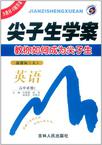尖子生学案·教你如何成为尖子生(高中必修2)
出版时间:2011-4 出版社:吉林人民 作者:赵红梅 页数:208
内容概要
在总结尖子生成功学习经验的基础上,精心编写了这套与教材完全同步的讲解类教辅书。本书不仅注重传授知识,更注重传播尖子生良好的学习习惯、方法、技巧。通过明确学习目标、积累基础知识,精研教材、总结规律方法、提升思维能力、拓展课外知识、构建知识体系、把握中(高)考信息等实用、高效、操作性强的学习环节,展现出本书与众不同的亮点。
书籍目录
Uint 1 Cultural relics
Uint 2 The Olympic Games
Uint 3 Computers
Uint 4 Wildlife protction
Uint 5 Music
模块综合评价
附录 参考答案与提示
章节摘录
In the late 1800s and early 1900s, there were mainly two types of families in the United States: the extended and the nuclear. The extended family usually includes grandparents, parents, and children living under the same roof. The nuclear family consists of only parents and children. Today there are many different kinds of families. Some people live in "traditional" families, that is, a stay-home mother, a working father, and their own biological children. Others live in two-paycheck families, single-parent families, adoptive or foster families, blended families (where men and women who were married before marry again and combine the children from previous marriages into the new families), childless families, and so on. What caused the structure of the family to change? In the early 1900s the birthrate began to fall and the divorce rate began to rise. Women were suddenly choosing to go to college and take jobs outside the home. In the 1930s and 1940s, many families faced serious financial, or money problems during the Great Depression, when many people lost their jobs. During World War II (1939——1945), 5 million women were left alone to take care of their homes and their children. Because many men were at war, thousands of these "war widows" had to go to work outside their home.
图书封面
评论、评分、阅读与下载
尖子生学案·教你如何成为尖子生(高中必修2) PDF格式下载
用户评论 (总计5条)
- 虽然买错版本了,但翻了翻,确实不错呀!!
- 最喜欢尖子生学案,所以买了这本书。
- 很好的教辅书,
- 系列图书,很有帮助!
- 40多天才收到
